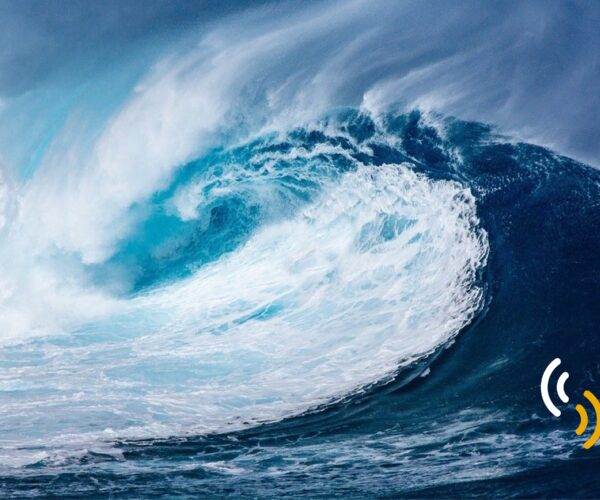A tsunami or tidal wave is a series of high-energy waves, which is formed by a displacement of water caused by a landslide, an underwater fault earthquake, a volcanic eruption or a boundary slip between two of the tectonic plates of the earth, either rising and falling suddenly. Most tsunamis occur in the Pacific Ocean’s Ring of Fire, an area where such events are very common.
Tsunamis can travel at more than 800 kilometers per hour in their journey through the ocean, even at the deepest point in it. At that speed, they can cross the Pacific Ocean in less than a day.
As long as a tsunami is in the ocean, its waves appear small. As it gets closer to shore and gets into shallower water, they slow down and its energy levels increase, which would translate into brute force, and height. But they are still dangerous since they can have an approximate speed of between 32 to 48 kilometers per hour when reaching the coast.
In the same way that common waves drag water inside from the shore before breaking against it, a tsunami removes large amounts of water from the shore approximately 5 to 10 minutes before impacting it, serving as a warning before it arrives. There are even cases where the water begins to recede from the shore during hours before the tsunami strikes the coast.
The NOAA (National Oceanic and Atmospheric Administration) clarifies that, although a tsunami cannot be prevented, the impact can be mitigated through preparedness, prior warnings and effective responses.
Although they are categorized as a particularly infrequent threat that does not occur very often, and even if most of them have a small magnitude and power, they represent a great threat to any coastal community or port, especially in the Pacific. A tsunami can occur on any coast at any time. It is not possible to predict where or when tsunamis will be originated, neither their power, but they can be prevented with preparation and the appropriated equipment to take the necessary preventive measures.

